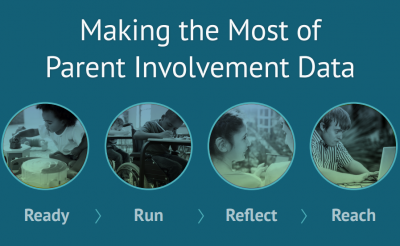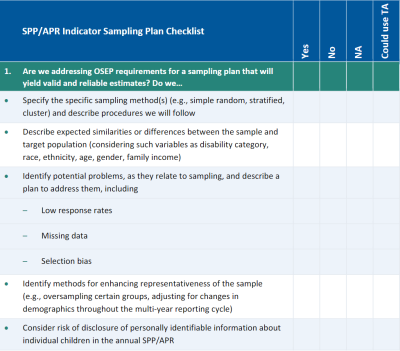This interactive resource provides states with an overview on how to gather representative parent involvement data for Part B SPP/APR Indicator 8. The resource defines key concepts such as representativeness, sampling, nonresponse bias, response rates, and weighting. It also offers information on how to improve the quality of parent involvement data, including strategies that can help states collect representative data and evaluate and improve the representativeness of their data before, during, and after data collection. For the full printable version, click here.
Resource Files & Links
Companion Resources
These are resources that supplement the resource above.
Format: Toolkits
Making the Most of Parent Involvement Data: Improving Quality and Enhancing UnderstandingThis toolkit is designed to assist states as they plan for and carry out their efforts to collect, report, analyze, and use high-quality parent and family involvement data. It defines key concepts; offers guidance on ways to improve the quality of the collection, analysis, and use of parent and family involvement data; and provides resources and tools to help states in their efforts parent involvement data efforts.
Related Content
Format: Quick Reference
SPP/APR Indicator Sampling Plan ChecklistStates are allowed to use sampling for collecting data for select Part B State Performance Plan/Annual Performance Report indicators. Sampling can provide an effective means for targeting resources for data collection and improving data quality. However, there are important requirements that states must consider when designing and implementing their sampling plans. States can use this interactive self-assessment tool to determine whether their state’s sampling plan addresses Office of Special Education Programs sampling requirements for best practice and to identify action steps to improve their sampling procedures.



